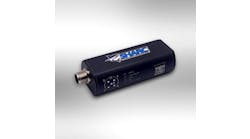- How are end users implementing stack lights on multi-station assembly lines?
- Why are operator buttons needed if an HMI can provide the same function?
- How can stack lights improve machine or system productivity?
- What are some of the best ways to indicate alarms and confirm that appropriate operator action has occurred?
Why are we still using stack lights, annunciators and push buttons? Are machine designers going for a retro look with these antiquated analog components? Or maybe it’s the hipster in them, wanting to show that they were building machines with interface devices before interface was cool. “That annunciator sounded way better on vinyl.”
Human-machine interface (HMI) can offer a digital version of almost any button, knob or light, but analog still has its place on machines, whether it’s for its ruggedness, for no-look interaction or for situations in which touchscreen operation isn’t an option.
We posed several questions regarding these time-tested components to a panel of industry veterans to see what light their experience and expertise might shed on the subject.
How do I indicate and describe alarms without overloading an operator with too much information?
Zach Tinkler is U.S. product manager, control and signaling at Schneider Electric.
Alicia Bowers, GE Digital: In the Industrial Internet world, OEMs can use today’s HMI/SCADA to filter alarms better for operators to increase efficiency. Now, we can use machine learning to look at the raw alarms in underlying systems, determine a root cause and guide operators through the right corrective actions. This can take place in a control room or in the field, with instructions going to a mobile device of choice, and deriving intelligence from the raw data.
Machine learning puts traditional alarm rationalization on steroids. HMI/SCADA today, based on the IIoT-connected enterprise, can provide full-scope alarm management and optimization, facilitating alarm rationalization by providing visibility to all alarms, their respective alarm priority/tier and frequency of occurrence for a specified period of time, delivering on an alarm philosophy that improves efficiency, reduces unscheduled downtime and decreases risk.
By 2020, 20% of IIoT technology in plants will be through OEMs, and this presents an opportunity for control designers to modernize how alarms are handled and improve operator efficiency.
Alicia Bowers is product marketing manager, automation software, at GE Digital.
Robb Weidemann is senior business development manager at Banner Engineering.
Sopan Khurana, Patlite: Typically, system designers account for the fact that operators can comfortably remember and respond to a limited number of alarms without becoming overwhelmed or tuning them out and becoming prone to mistakes. One can write an entire paper on just this topic, but typically the key ideas are that every alarm should be relevant and useful to the operator, that there should be no alarm without a predefined operator response and that there should be a defined alarm rate and a manageable quantity of alarms in total.
Sopan Khurana is applications engineer at Patlite.
Michael Day is industrial control products market development manager at Siemens.
Michael O’Neill is president at Werma-USA.
Thomas Putz, Auer Signal: Use standard colors that are common to everyone. Green means find. Orange means attention. Red means alarm. These need almost no explanation. Reinforcing critical operations can be underpinned by acoustic alarms incorporated into the stack light. A cue-card accessory can assist operators in identifying what each beacon on the stack light means.
Thomas Putz is sales manager at Auer Signal.
Alvaro Sanchez is product manager at Rockwell Automation.
With manufacturers now embracing Industry 4.0 and the Industrial Internet of Things (IIoT), there will be some significant changes to how we indicate and utilize stack lights for indication in the plant. There will be new opportunities to have a stack light report the results of factory big-data analytics. Analytics data will be indicating how are we performing to quota or meeting quality metrics. Predictive analytics will allow for predictive-maintenance warnings to be communicated visually, so the next time we have a planned shutdown, such as lunch, we can have maintenance ready to investigate the warning. New forms of indication, such as text messages, apps and emails, are appearing already; however, I see big opportunity for augmented reality to provide individualized indication and alarms only to the people that require the information. It will be harder to ignore a machine's material-shortage warning as it shines in the middle of your personal heads-up display (HUD).
Will Healy III is marketing management director at Balluff.
ALSO READ: Harsh environments call for more rugged components
Mike Bacidore is the editor in chief for Control Design magazine. He is an award-winning columnist, earning a Gold Regional Award and a Silver National Award from the American Society of Business Publication Editors. Email him at [email protected].















